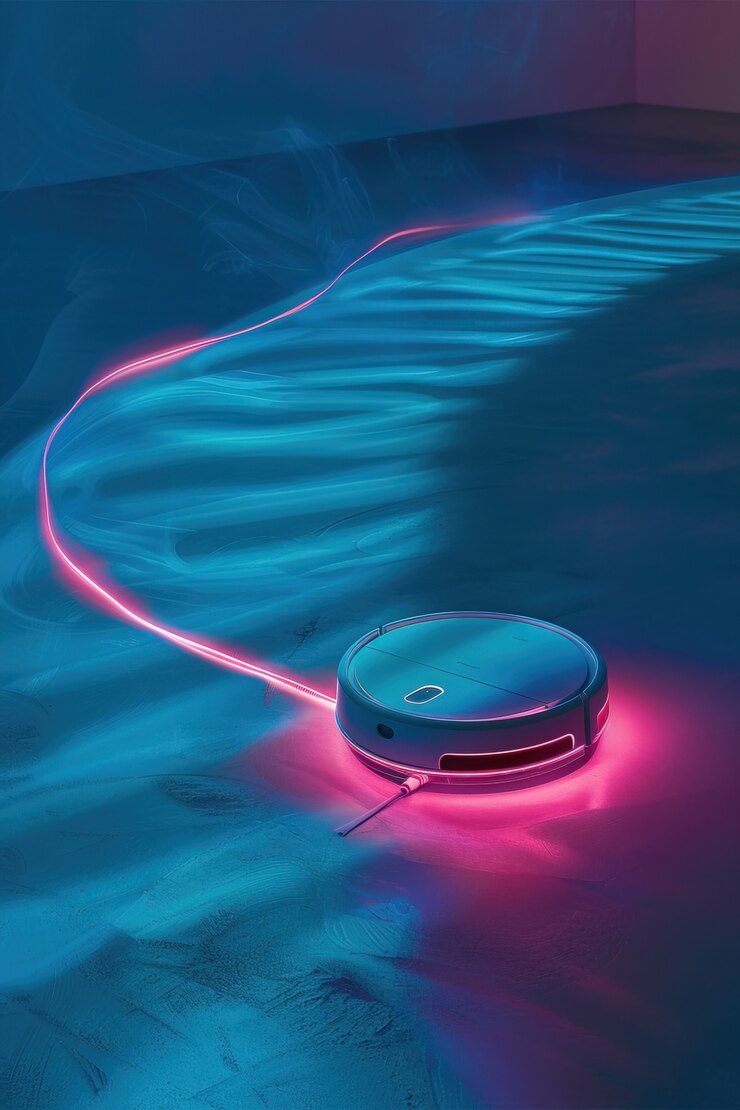The History of Robot Vacuum Cleaners: 1996 to AI-Powered Innovations
Explore the fascinating history of robot vacuum cleaners, from their humble beginnings in 1996 to today's AI-driven cleaning revolution.
Robot vacuum cleaners have become a household essential, making home cleaning easier than ever. But did you know that the first robot vacuum was introduced in 1996? Since then, these smart cleaning devices have evolved dramatically, integrating advanced navigation, AI, and smart home connectivity. In this article, we’ll take a journey through the history of robot vacuum cleaners, exploring how they transformed from simple machines to intelligent home assistants.
| Headings | |
|---|---|
| 1 | The Birth of Robot Vacuum Cleaners: 1996 |
| 2 | Early Innovations in the 2000s |
| 3 | The Rise of Smart Navigation (2010s) |
| 4 | AI and Advanced Mapping (2020s) |
| 5 | Modern-Day Smart Home Integration |
| 6 | How AI is Shaping the Future of Cleaning |
| 7 | Key Milestones in Robot Vacuum History |
| 8 | The Future: What's Next for Robot Vacuums? |
| 9 | FAQs: Understanding Robot Vacuum Evolution |
The Birth of Robot Vacuum Cleaners: 1996
The first-ever robot vacuum cleaner was introduced by Electrolux in 1996. Named Trilobite, it was a groundbreaking invention, but it had significant limitations:
- It lacked smart navigation.
- It often bumped into objects.
- Its cleaning efficiency was limited.
Due to these issues, the Trilobite was not widely adopted, but it paved the way for future innovations.
Early Innovations in the 2000s
The real revolution began in 2002 when iRobot launched the first commercial robot vacuum cleaner, the Roomba. This model introduced several key features:
- Basic obstacle detection sensors.
- Automatic recharging.
- Randomized cleaning patterns.
Although Roomba’s early versions weren’t perfect, they gained massive popularity, proving that robot vacuums were here to stay.
The Rise of Smart Navigation (2010s)
By the 2010s, robot vacuums had evolved with better navigation systems. Companies like Neato Robotics introduced:
- Laser-based mapping (LIDAR).
- Virtual barriers to prevent entry into certain areas.
- Stronger suction power for deep cleaning.
These improvements made robot vacuums more intelligent and efficient, allowing them to clean homes more effectively.
AI and Advanced Mapping (2020s)
The 2020s marked a major leap forward, as AI-powered robot vacuums became mainstream. Brands like Lefant, Roborock, and Ecovacs introduced:
- AI-enhanced object recognition to avoid cables, socks, and pet waste.
- DToF (Direct Time-of-Flight) sensors for precision mapping.
- Multi-floor mapping for larger homes.
These advancements allowed robot vacuums to clean more efficiently and autonomously than ever before.
Modern-Day Smart Home Integration
Today, robot vacuums are no longer standalone devices—they are part of the smart home ecosystem. Modern features include:
- Voice control with Alexa and Google Assistant.
- Smartphone app control for remote scheduling.
- Self-emptying dustbins for weeks of hands-free cleaning.
With these integrations, robot vacuums have become true home assistants, requiring minimal user intervention.
How AI is Shaping the Future of Cleaning
AI is now transforming robot vacuums in unprecedented ways:
- Self-learning capabilities: They adapt to cleaning patterns over time.
- AI-powered obstacle avoidance: Detects and avoids objects in real-time.
- Personalized cleaning suggestions: Analyzes usage data to optimize cleaning schedules.
This means that robot vacuums are becoming smarter, faster, and more efficient than ever before.
Key Milestones in Robot Vacuum History
- 1996 – Electrolux Trilobite: The first robot vacuum prototype.
- 2002 – iRobot Roomba: The first commercially successful model.
- 2010s – LIDAR and virtual barriers introduced for better navigation.
- 2020s – AI-powered recognition, multi-floor mapping, and self-emptying bases.
The Future: What's Next for Robot Vacuums?
Looking ahead, the future of robot vacuums may include:
- Full AI automation: Robots that decide when and how to clean.
- Self-cleaning capabilities: Robots that wash their own brushes and dustbins.
- Integration with other smart home appliances: Coordinated cleaning with HVAC and air purifiers.
With continuous advancements, robot vacuums will become even more intelligent and indispensable in daily life.
FAQs: Understanding Robot Vacuum Evolution
1. When was the first robot vacuum cleaner invented?
The first prototype, the Electrolux Trilobite, was introduced in 1996.
2. What was the first successful robot vacuum?
The iRobot Roomba, launched in 2002, became the first commercially successful model.
3. How do modern robot vacuums navigate better than earlier models?
Modern vacuums use LIDAR, AI, and DToF sensors for precise mapping and efficient navigation.
4. What are the biggest advancements in robot vacuums today?
AI-powered obstacle avoidance, multi-floor mapping, and self-emptying dustbins are among the most significant innovations.
5. What can we expect from future robot vacuums?
Future robot vacuums will feature even smarter AI, full automation, and advanced self-maintenance capabilities.
The journey of robot vacuum cleaners—from the 1996 Trilobite to today’s AI-powered models—has been nothing short of revolutionary. Over the years, these devices have evolved from basic cleaning tools to intelligent home assistants. With advancements in AI, automation, and smart home integration, the future of robot vacuums looks brighter than ever.
As technology continues to evolve, one thing is clear: robot vacuums are no longer just a luxury—they are an essential part of modern living.





























